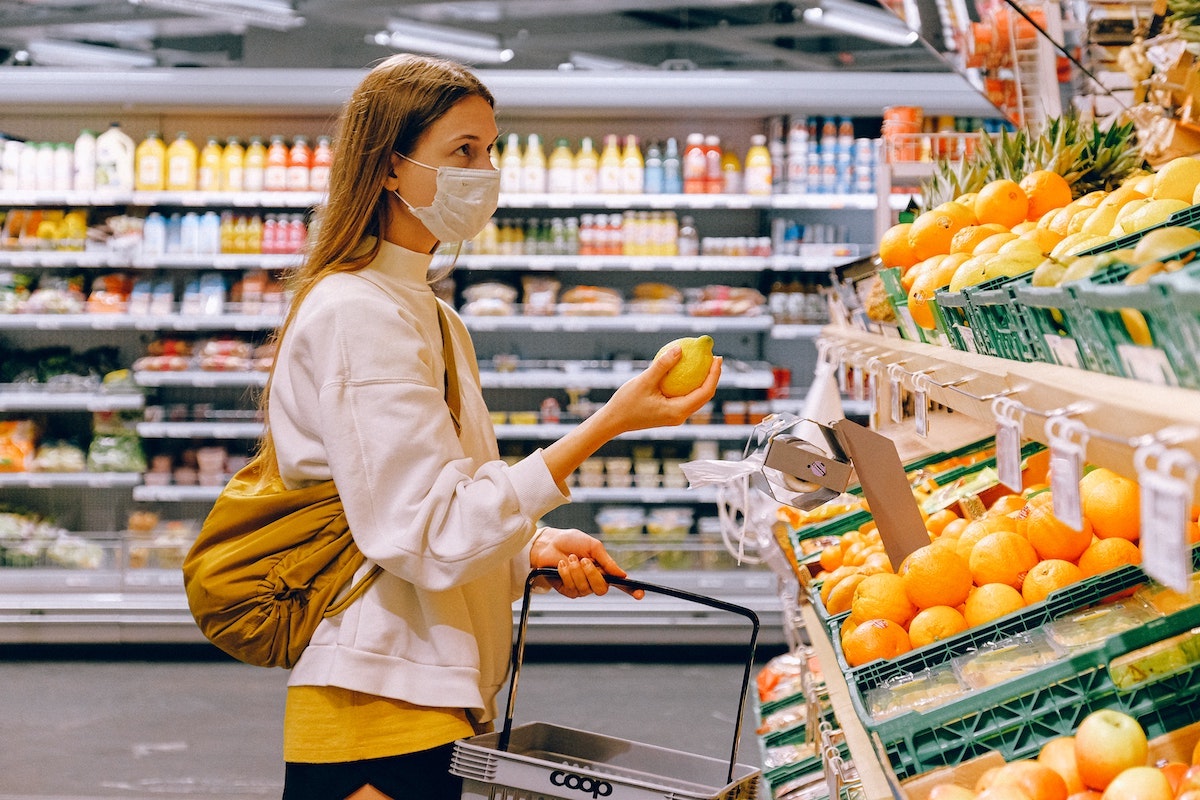x
READY TO BECOME A MEMBER?
Stay up to date on the digital shelf.
x
THANK YOU!
READY TO BECOME A MEMBER?
THANK YOU!

“When we looked at 2017, only about 17% of [U.S. consumers] were shopping online for groceries. Fast forward to 2021 … everyone, regardless of age, income, or even geography, said that they were shopping for groceries online.” — Peter V.S. Bond, Vice President of Strategy and Retail Partnerships, PowerReviews
In a 2017 survey, the leading provider of user-generated content (UGC) solutions PowerReviews, found that only 17% of US consumers purchased groceries online.
But today, online grocery shopping has become a new normal shopping habit. According to Acosta, 75% of shoppers plan to continue some of their new shopping habits post-Covid-19. Incisiv and Mercatus predict that by 2025, online grocery will account for 21.5% of grocery sales or $250 billion.
PowerReviews recently released a brand new survey of 4,000 U.S. consumers on the evolution of their omnichannel grocery shopping behaviors.
Peter V.S. Bond, PowerReviews’ vice president of strategy and retail partnerships and the co-host of the CPG Guys podcast, shared great insights and powerful takeaways for brands during a recent episode of Unpacking the Digital Shelf podcast, The Evolution of The Grocery Shopper.
The COVID-19 pandemic has accelerated ecommerce adoption. Consumers are now more comfortable with online grocery shopping.
Regarding baby boomers only, over 60% of them are adapting and adopting this behavior.
Time and convenience are always the critical reasons people switch to online grocery shopping. But in the wake of COVID-19, safety is also a key driver for grocery consumers’ ecommerce participation. They have been more concerned about “their safety and not having to go into a physical store and interact with other people,” Bond says.
Amazon Fresh and Drizly have seen a decline in the number of users. Meanwhile, pickup services like drive-through and curbside (click and collect) are on the rise.
Bond shares that in their 2017 survey, 34% of respondents used meal delivery services like Blue Apron, Home Chef, and Hello Fresh. But their new survey found only 15% of people are doing it. The reason can be that because of the pandemic, people “choose to do the home meal prep themselves ... and cook a lot more from scratch,” he explains.
Subscription services allow consumers to set what they want to buy and how often they want it delivered. About 70% of respondents say they buy non-perishable package foods online.
More consumers buy personal care items, home care products, drinks, and frozen foods online. “Alcohol is the only one that hasn't grown dramatically,” Bond says.
When it comes to where consumers shop for groceries online, there is a decline in the importance of Amazon. Meanwhile, marketplaces like Instacart have seen tremendous growth, accounting for 50% of total U.S. online grocery sales, says Bond.
GoPuff is another business model that proved to be profitable. They choose cheap, large warehouse spaces located within a metro area, and their drivers are their employees. That helps them achieve great margins and have capacities to compete with 7-Eleven, CVS, and Walgreens.
According to Bond, brands need to focus on the grocery shopping experience on the digital shelf. Product content is no longer just about product description and hero image, but also alternative images, product ratings, and reviews. He emphasizes that if a brand doesn’t show product ratings and reviews on their site, other competitors will steal their shoppers.
Here are exciting statistics from PowerReviews’ survey that brands should know:
Bond says that putting products, reviews, and other UGC on product pages drives a substantially improved click-through rate. Your goal is to connect with the consumer much further up the funnel, certainly in the consideration phase. That’s why you should have UGC on your listing pages, either through search results or category levels.
Adding product ratings and reviews to ads helps drive brand awareness. When people are interested in your products, they’ll click through the ads to visit your website to learn more about your offerings.
“Don't just have it live in that predefined space on the product page, put it as verbatims in your image, carousel, put it on your sponsored Instagram ads, put it on the homepage of your brand's site, whatever it is, but use it to build trust and loyalty.”— Peter V.S. Bond, Vice President of Strategy and Retail Partnerships, PowerReviews
Bond shares that almost half of the respondents in their survey want to see ratings and reviews in the app. “If you don't have it there, you're missing the opportunity because everybody walks into the store with their devices, and they are smarter than they were before the smartphone came out,” Bond says.
Consumers also want to see product ratings and reviews on the shelf tag, social media, and product packaging. So, he advises brands to “put a couple of verbatims on there because they’re timeless.” You can also put a QR code on the shelf tag that directs your consumers to all the written reviews they want to read.
Bond emphasizes that because “people want to see how absolutely bad the product really could be,” brands should leverage all the reviews they’ve collected and allow consumers to filter them.
Listen to the full podcast to learn more about online grocery shopping trends and how to leverage product ratings and reviews to drive your sales.